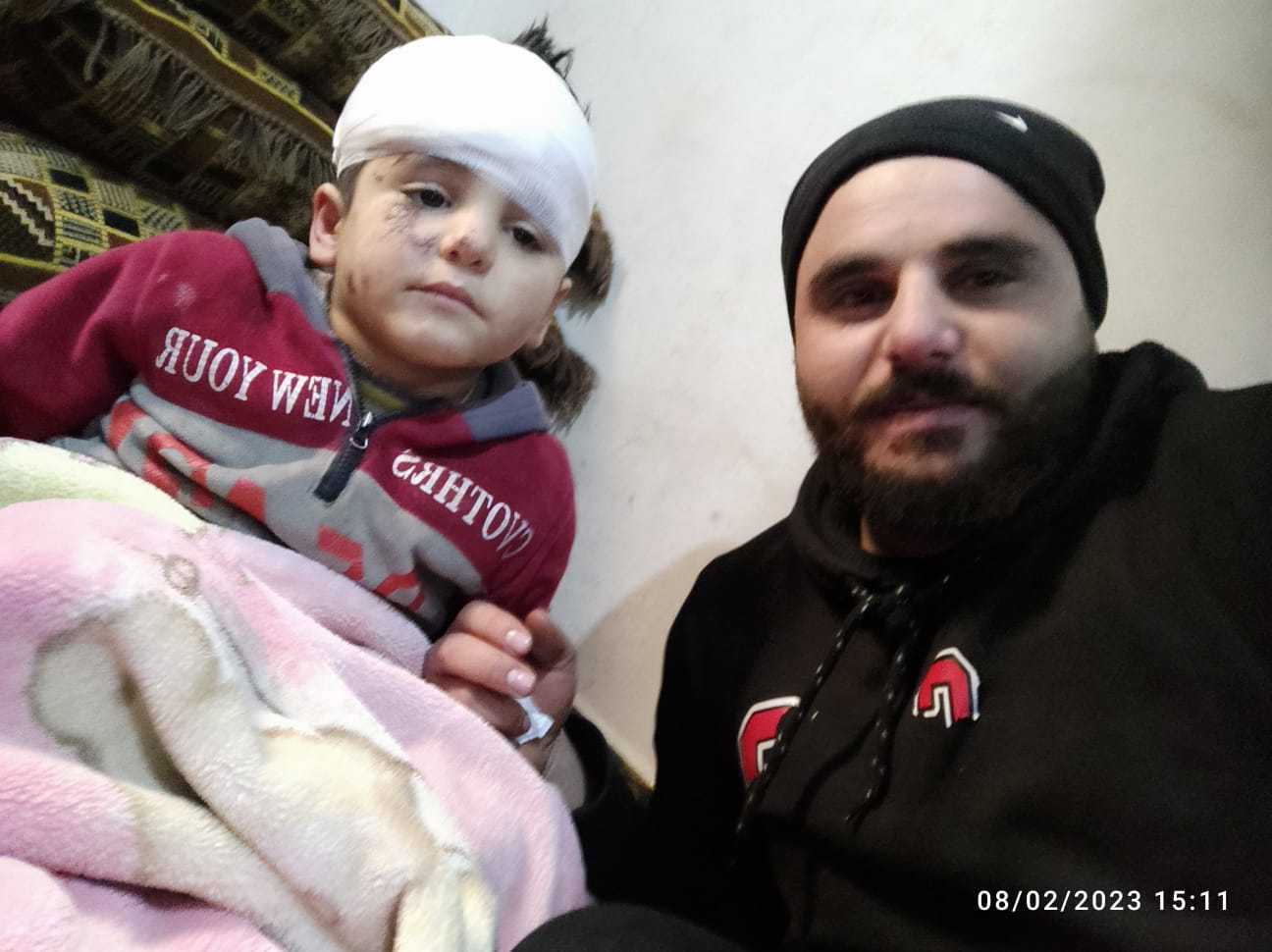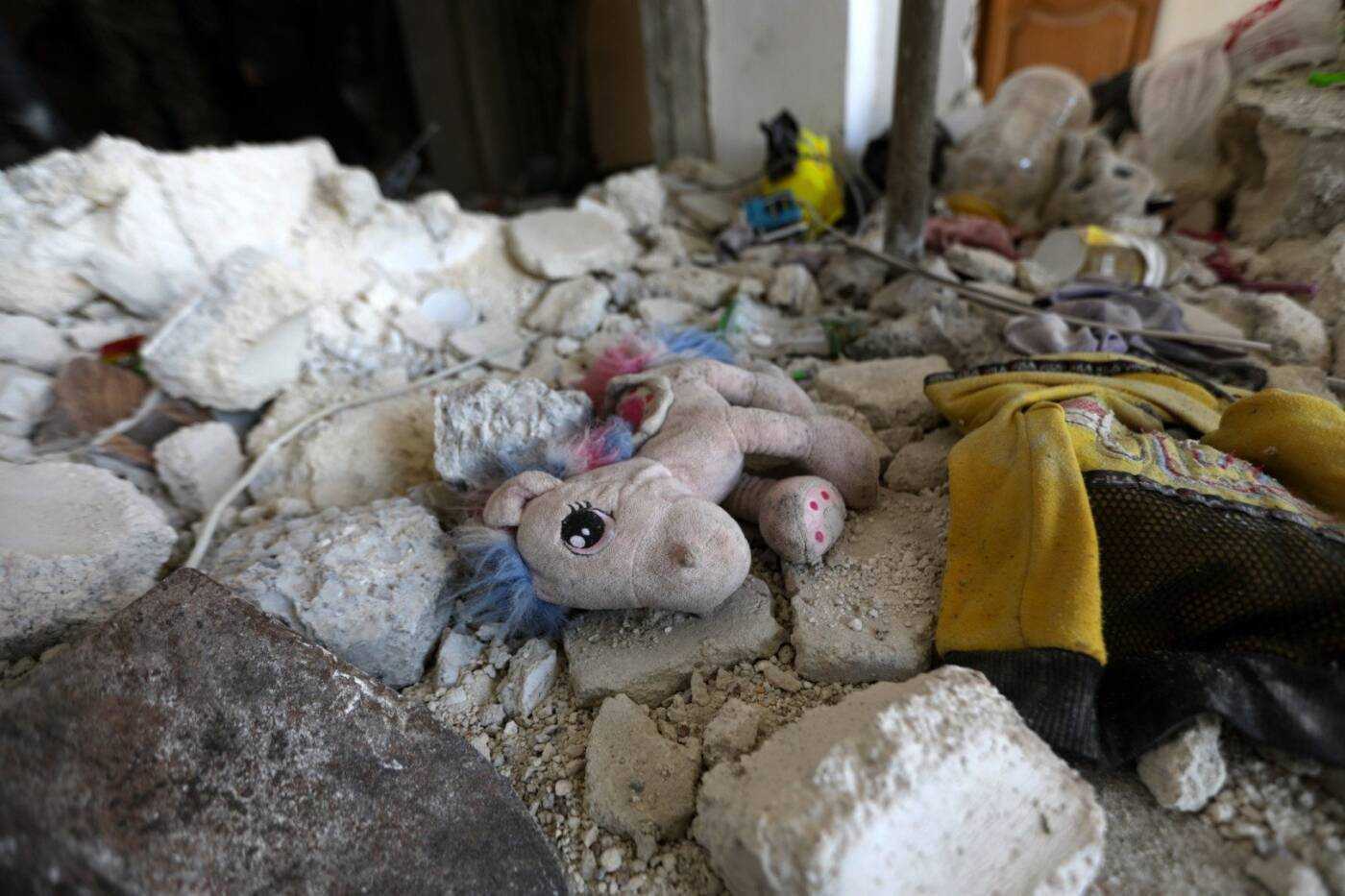Concerns over earthquake’s impact on children in northwestern Syria as relief efforts continue
As the earthquake emergency response in northwestern Syria focuses on rescue operations and relief, some local organizations in northwestern Syria are honing in on the disaster’s impact on children.
11 February 2023
ATHENS – As Hamdou Hamada al-Sheikh’s house violently shook in the early hours of February 6, he managed to rush his five-year-old son Mahmoud outside to safety, but his wife and other three children were still inside as the building turned to rubble. Their home in Jenderes, like most houses in this northwestern Syrian town, was flattened by the strongest earthquake recorded in the region in more than a century.
Hit by the debris of the family’s home, “Mahmoud was injured in his leg,” his 26-year-old father said. “He underwent surgery in the hospital, and he got seven stitches in his head, but he’s doing okay now.” Friends helped Hamdou retrieve the bodies of his wife and other children.
Five days later, the combined death toll of Monday’s devastating earthquake and hundreds of aftershocks in southeastern Turkey and northern Syria stands at 24,000. The number of casualties continues to rise, as bodies are still being recovered from collapsed buildings in both countries.
In Turkey, the epicenter of the disaster, 79,110 rescue personnel and 5,709 international teams have been deployed in rescue operations. In opposition-held northwestern Syria, rescue operations fell on the shoulders of the 2,800 volunteers of the Syrian Civil Defense (also known as the White Helmets). Two rescue teams, from Egypt and Spain, also entered northern Syria days after the earthquake. But as of February 10, only five percent of impacted areas in northwestern Syria were being covered by rescue operations, according to UN estimates.
“Until this moment, we have rescued 2,950 people alive,” said Munir Mustafa, Deputy Director of the Civil Defense, adding that “many” of those who died under the rubble were children. As of Saturday, rescuers had recorded a death toll of 2,166, and were focusing solely on body recovery efforts.
The majority of the more than four million people who live in northwestern Syria, more than half of whom are displaced from other parts of the country, are women and children. In times of natural disasters, children are especially vulnerable. The World Health Organization has estimated that up to 1.4 million children across Turkey and Syria could be affected by the disaster.

Hamdou and his son Mahmoud, who is recovering from his injuries, 8/2/2023 (Hamdou Hamada al-Sheikh)
One hundred kilometers away from Jenderes, in Gaziantep, southern Turkey, one person who would normally follow up on the case of five-year-old Mahmoud herself narrowly escaped death this week. Layla Hesso is the Advocacy Manager of Hurras Network, an association working on child protection in northwestern Syria. Right before the earthquake devastated her building, she and her family ran outside. They spent the next two nights sleeping in their car.
“This is the first time that our team in Turkey was affected, so we couldn’t help right away in the northwest. Our hands were tied. It was very hard psychologically, because these two first days were very crucial,” she said, her voice breaking.
The first 72 hours following a disaster like Monday’s earthquake are “essential,” Mustafa from the White Helmets explained. On Saturday, the rescue organization said in a press release that no survivors had been found in the rubble since Thursday.
In Maryamin, Idlib province, 19-year-old Mahmoud had to wait 72 hours to retrieve the bodies of six of his family members. “It took three days for the machinery to come and take my four siblings, aged 2, 8, 10 and 12, my mother and grandfather out from under the rubble,” he said.
“From the first minute after the earthquake, we pleaded for machinery to help us extract people from the rubble,” Mustafa said. It never came.
No aid of any kind entered through the only authorized border crossing for international aid deliveries into northwestern Syria—which is controlled by the Islamist group Hayat Tahrir al-Sham (HTS) and Turkish-backed Syrian National Army (SNA) factions—for days. On Thursday, three days after the earthquake, a handful of UN trucks loaded with a delivery of relief items scheduled before the disaster finally arrived.
“When the catastrophe happened, they should have opened all their border crossings and let international teams enter to help the people, what has happened is incomprehensible,” added Hesso.
Psychological support ‘not a luxury’
In addition to rescue efforts, food, healthcare and shelter have been at the center of the initial emergency response in northwestern Syria. But Hesso emphasized the importance of psychological support, including for children. “There’s very little psychological attention and it’s considered a luxury but it’s not,” she said.
“We cannot just work on relief. People are not just hungry—people have severe psychological damage and complex protection issues, so the response cannot just be to leave a box of relief items on their door,” she added.
Today, the 150 members of the Hurras Network’s team inside Syria are visiting damaged areas in the northwest trying to locate children whose parents are among the dead and missing. “We take the children to our care center, and we’re doing psychological support sessions to help them deal with shock and post-traumatic stress disorder (PTSD),” she said.
Violet Organization, a Syrian NGO also working with children in the northwest, was severely hit by the earthquake. “We lost two people on our team and five are missing,” field coordinator Derek Omar Alderbas, said from Idlib. “Even though we had this critical situation, we were still active on the field rescuing and attending people right after the earthquake,” he added.
So far, Violet has assisted 1,500 people, most of them children. “Some children are suffering panic attacks when their house cracks, even people who didn’t lose their house, they are afraid and are in the shelter,” Alderbas said.
Faisal Hamoud’s phone hasn’t stopped ringing since the earthquake. He is the coordinator of Bait al-Tifl, in Sarmada city, Idlib. It is the main temporary shelter and care center for orphaned and vulnerable children in the area.
“Since the disaster, many people and organizations have contacted us, telling us about children who have lost their family. Right now most of them are in medical centers receiving attention, but after that we will bring them to the center,” Hamoud said.
The center—which has a maximum capacity of 35 children—did not collapse, but became structurally unsafe after the earthquake, and staff and children had to evacuate to another location in the city. “If we have to accommodate more children, we will have to find another extra space and I think we are headed in this direction in the next few days,” he said.
His team has also been assisting children with severe psychological crises and providing trauma care.
Beyond mental health concerns, Hamoud pointed to other children’s specific needs. “We have an urgent need for milk because markets are empty—even if we want to buy there’s nothing because Turkey is closed for commercial supplies, and some hospitals have shortages of plaster for broken bones,” he explained. “And you have whole families on the street and temperatures at night reach -10 degrees Celsius,” he added.
Beyond mental health, families are facing primary needs like food, drink or shelter that organizations operating on the ground are working to fill. Kieren Barnes, the Syria Country Director for Mercy Corps, said their team is particularly concerned about access to clean water.
The organization’s staff has tested the water quality of 45 boreholes in northwestern Syria, and found eight of them to be contaminated or not usable. “There is now mud and soil in some water supplies, so we anticipate a possible spike in waterborne diseases at a time when there is already a cholera outbreak in Syria,” he said. Malnourished children are at higher risk of death by cholera.







